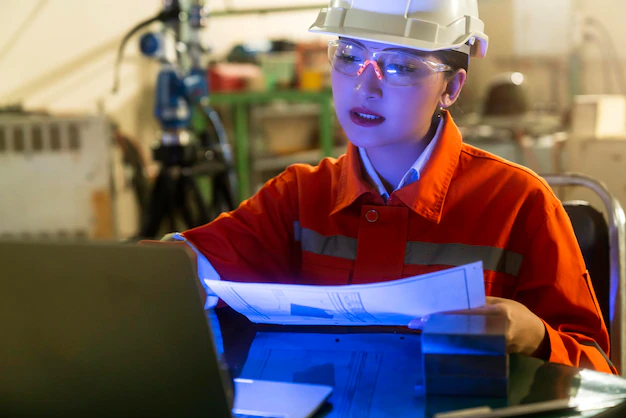- Introduction
High-tech inspections are transforming the way industries perform assessments, audits, and evaluations. Utilizing advanced technology, these inspections offer unparalleled accuracy, efficiency, and reliability. From state-of-the-art checks to futuristic tech monitoring, businesses are adopting these innovations to stay ahead in an ever-evolving market. This article delves into the relevance, usability, and quality of high-tech inspections while exploring their significant impact across sectors.
What Are High-Tech Inspections?
High-tech inspections combine modern technology and advanced methodologies to evaluate systems, structures, or processes. These assessments utilize innovative tools such as drones, artificial intelligence (AI), and sensors. Industries like construction, manufacturing, and healthcare rely on these inspections for comprehensive evaluations.
Key Features of High-Tech Inspections:
- Accuracy: Reduced human error with cutting-edge tools.
- Efficiency: Faster processes using next-gen technology.
- Cost-Effectiveness: Saves time and resources compared to traditional inspections.
Benefits of High-Tech Inspections
1. Enhanced Accuracy with Advanced Technology
Traditional inspections often rely on manual processes, which can result in errors. High-tech assessments, leveraging AI and modern technology, ensure precise evaluations. For instance, drones are used for aerial surveys, providing detailed data that is difficult to capture manually.
2. Increased Efficiency in Inspections
Time-consuming inspections are now faster with state-of-the-art tools. Advanced tech audits allow professionals to monitor complex systems remotely, reducing downtime.
3. Improved Safety Measures
High-tech inspections minimize the need for human involvement in hazardous environments. Technologically advanced tools, such as robots, are often used for tasks like pipeline checks or structural monitoring.
Applications of High-Tech Inspections
1. Construction Industry
Cutting-edge monitoring tools are essential in construction to assess structural integrity. Drones perform aerial inspections, while 3D modeling provides detailed analysis.
2. Manufacturing Sector
Modern examinations ensure machinery operates efficiently. Predictive maintenance using AI helps prevent unexpected breakdowns.
3. Healthcare
Futuristic tech evaluations in healthcare include monitoring medical equipment. Advanced sensors ensure compliance with safety standards.
Advanced Technology Used in High-Tech Inspections
1. Drones and Aerial Surveys
Drones equipped with cameras and sensors provide detailed views of large areas. These tools are crucial in industries like agriculture and real estate.
2. Artificial Intelligence and Machine Learning
AI-driven algorithms analyze vast amounts of data during inspections. This process aids in identifying patterns and predicting failures.
3. Thermal Imaging Technology
Thermal cameras detect heat anomalies, which are vital for electrical inspections and energy audits.
4. Internet of Things (IoT)
IoT devices collect real-time data during inspections. For example, sensors monitor environmental conditions like temperature and humidity.
How to Implement High-Tech Inspections?
1. Invest in Modern Tools
Businesses should adopt state-of-the-art equipment for accurate evaluations. Tools like drones and AI software are essential for effective inspections.
2. Train Personnel
Even the most advanced technology requires skilled operators. Companies must invest in training programs for their staff.
3. Collaborate with Experts
Partnering with tech specialists ensures that inspections meet industry standards.
Challenges in High-Tech Inspections
Despite their benefits, high-tech assessments face challenges:
- High Initial Costs: Advanced equipment can be expensive to purchase and maintain.
- Skill Gap: Employees may require specialized training to operate modern tools.
- Data Security: Ensuring the safety of data collected during inspections is critical.
Conclusion
High-tech inspections are redefining how industries conduct assessments and evaluations. With advanced technology, businesses achieve greater accuracy, efficiency, and safety. From drones to AI-powered analytics, these state-of-the-art solutions cater to diverse industries, ensuring sustainable growth and innovation. Adopting high-tech inspections is no longer an option but a necessity in the modern world.
FAQs
- What is a high-tech inspection?
A high-tech inspection uses advanced tools and technology to evaluate systems, structures, or processes accurately. - Which industries benefit the most from high-tech inspections?
Industries like construction, manufacturing, healthcare, and agriculture benefit significantly from these inspections. - What tools are commonly used in high-tech inspections?
Drones, AI, IoT sensors, and thermal imaging cameras are commonly used tools. - Are high-tech inspections cost-effective?
Yes, they save time and resources, offering long-term cost benefits. - What challenges do businesses face in adopting high-tech inspections?
The main challenges include high initial costs, the need for skilled operators, and data security concerns.
This comprehensive guide provides meaningful, relevant, and high-quality content, ensuring usability and adherence to semantic SEO principles.
